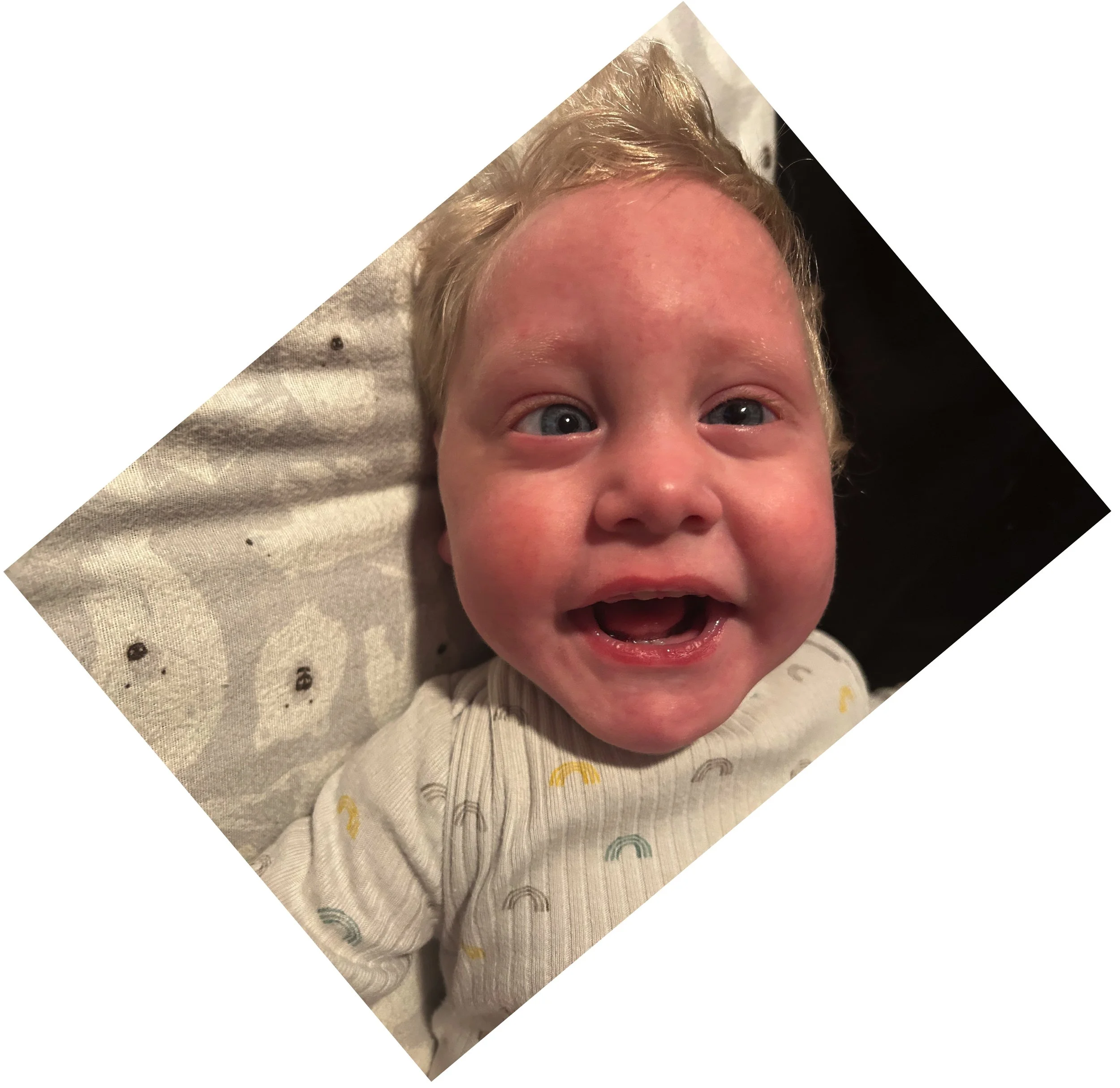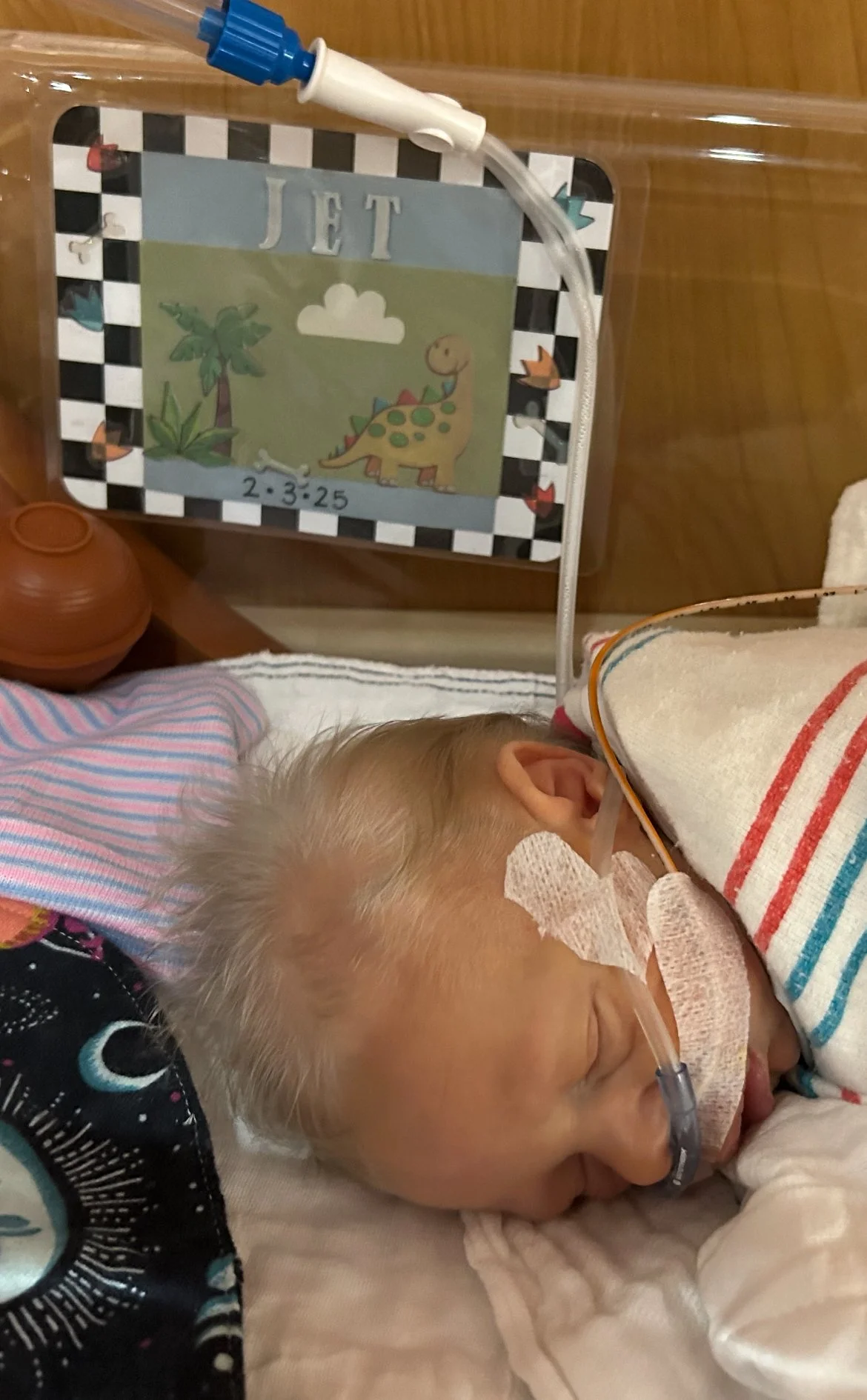Living with ReNU Syndrome
Jet
Jet’s journey began before birth, but only a few clues revealed what was ahead.
While his NIPT was negative, during pregnancy, three findings stood out: ventriculomegaly, hydronephrosis, and severe fetal growth restriction (sFGR). Despite eating well, his mom experienced unexplained weight loss throughout pregnancy, something she didn’t realize other parents of ReNU children had also gone through until much later. At the time, no one knew why it was happening.
Jet was born at term and immediately showed he would need specialized care. He had a high-arched palate, micrognathia, a downturned mouth, bilateral lagophthalmos, subtle facial differences, and profound hypotonia. One of the biggest challenges was that he had no suck reflex, making feeding extremely difficult. The tool that made feeding possible was the Pigeon cleft palate bottle. It has become his lifeline, and his family hopes other parents facing the same struggle hear about this option early, because it truly made the difference between failure to eat and safe, reliable feeding.
As evaluations continued, Jet’s medical story unfolded piece by piece. He was found to have microcephaly, an umbilical hernia, a sacral dimple, undescended testicle, hypospadias/megameatus, penoscrotal web, thumb abduction, clinodactyly, and severe developmental delays. Imaging revealed a pineal cyst, reduced white matter, optic nerve hypoplasia, corpus callosum volume loss, and cortical visual impairment resulting in bilateral blindness. His heart showed a secundum atrial septal defect and a tricommissural bicuspid aortic valve with mild dilation of the aortic root. His kidneys had grade 3 and grade 2 hydronephrosis and vesicouretheral reflux. The list of anomalies grew long, but each piece helped clarify his medical needs.
A long series of tests followed him from the moment he was born: CMV, chromosomal microarray, Angelman/Prader-Willi methylation testing, myotonia screens, mitochondrial panels, and multiple targeted genetic studies. Whole exome sequencing detected a DVL3 variant, but because it was inherited and did not match Jet’s clinical picture, it was determined not to play a role.
It wasn’t until whole genome sequencing that Jet finally received the answer that explained everything: ReNU syndrome, caused by a small but critical mutation in RNU4-2.
Despite the complexity of his medical landscape, Jet’s spirit is unmistakable. He has a naturally happy disposition and a laugh that lights up any room he’s in. At nine months old, he cannot yet hold his head on his own, but he recently achieved a huge milestone: he can grasp toys, hang on to them, and bring them to his mouth with purpose and interest. These victories are celebrated with the same enthusiasm most families reserve for first words or first steps.
Jet receives occupational therapy, physical therapy, and speech therapy several times a week. Each session helps him build strength, feeding skills, sensory awareness, and communication foundations. His growth is slow, and at nine months he weighs just 15 pounds, but he continues to gain steadily and follow his own curve.
Jet loves the outdoors, warm baths, sunlight, fresh air, and especially water. These moments bring him comfort and joy, and they show a side of his personality that’s bigger than any diagnosis.
Jet’s story is one of perseverance, resilience, and quiet strength. Through sharing his journey, his family hopes to support other parents searching for answers and to help build a stronger community for those navigating ReNU syndrome.


